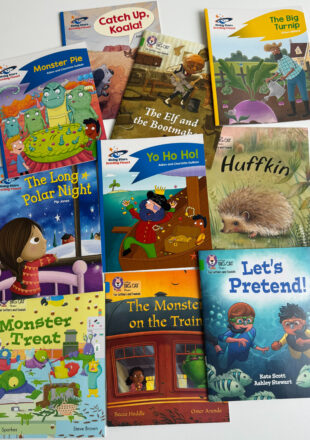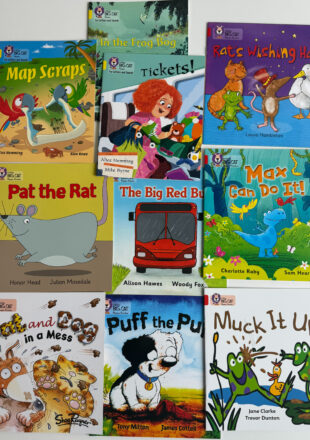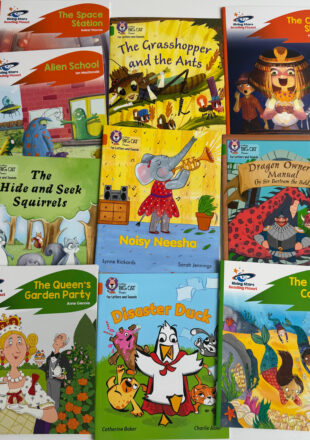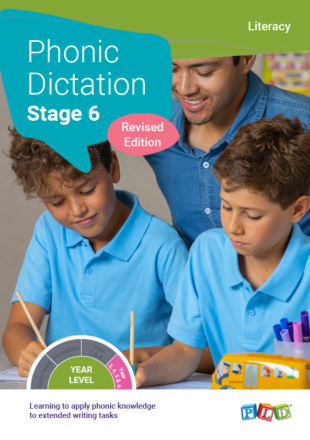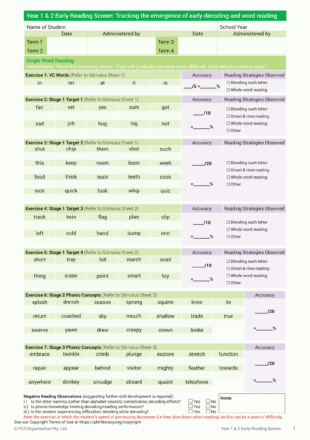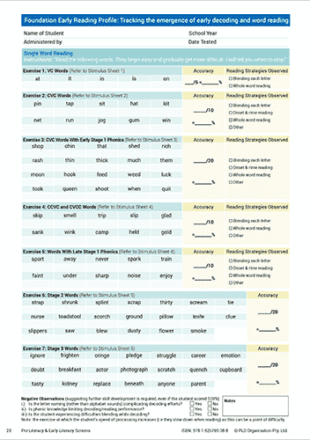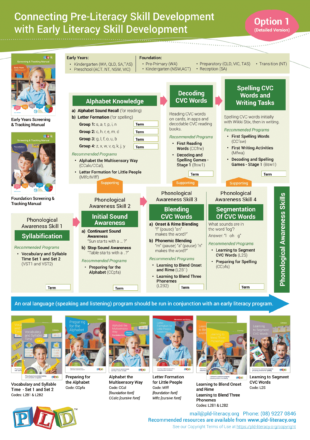Age
Showing 289–304 of 458 results
-
Home Reading Books (Set 2) CVC, CCVC & CVCC – Foundation Semester 2
28 Decodable CVC, CCVC & CVCC Home Reading Books with Limited HFW’s
The 28 modern and engaging decodable reading books in this curated set align with the PLD’s evidence-based Structured Synthetic Phonics program. These take-home reading books
$265.00[flipbook-popup id=''][/flipbook-popup] -
Additional Home Reading Books (Set 1) VC & CVC Words – Foundation Semester 1
25 Decodable VC & CVC Home Reading Books with Limited HFW’s
The 25 modern and engaging decodable reading books in this curated set align with the PLD’s evidence-based Structured Synthetic Phonics program. These take-home reading books
$220.00[flipbook-popup id=''][/flipbook-popup] -
Fiction Group Reading Books Set 3 – Year 1 Semester 1
Set of 60 (10 titles, 6 of each) Stage 1 Target 2 & Target 4 phonic concepts, along with further high frequency words
The 6 titles modern and engaging decodable reading books in this curated set align with the PLD’s evidence-based Structured Synthetic Phonics program. These group reading
$600.00[flipbook-popup id=''][/flipbook-popup] -
Fiction Group Reading Books Set 2 (CVC, CCVC & CVCC) – Foundation Semester 2
Set of 60 (10 titles, 6 of each title) Decodable CVC, CCVC & CVCC Group Reading Books with increased length, some HFW’s and Stage 1 phonic concepts
The 6 titles modern and engaging decodable reading books in this curated set align with the PLD’s evidence-based Structured Synthetic Phonics program. These take-home reading
$550.00[flipbook-popup id=''][/flipbook-popup] -
Fiction Group Reading Books Set 4 – Year 1 Semester 2
Set of 60 (10 titles, 6 of each) Stage 1 & 2 phonic concepts and high-frequency words
The 10 modern and engaging decodable reading book titles in this curated set align with the PLD’s evidence-based Structured Synthetic Phonics program. These group reading
$630.00[flipbook-popup id=''][/flipbook-popup] -
Fiction & Non Fiction Group Reading Books Set 1 (VC & CVC) – Foundation Semester 1
Set of 60 (10 titles, 6 of each title) Decodable VC & CVC Group Reading Books with Limited HFW’s
The 6 titles of modern and engaging decodable reading books in this curated set align with the PLD’s evidence-based Structured Synthetic Phonics program. These take-home
$520.00[flipbook-popup id=''][/flipbook-popup] -
Phonic Dictation – Stage 6
Applying Phonic Knowledge to Extended Writing Tasks
Phonic Dictation: Stage 6 supports students to bridge the gap between correctly spelling test words and applying their skills to extended writing. By completing regular dictation tasks, students rehearse and reinforce their phonics and spelling knowledge in increasingly complex contexts, improving their ability to transfer skills to self-generated writing. Dictation sessions are quick to prepare yet deliver significant benefits across key literacy areas, including: Listening and auditory memory Handwriting and language development Spelling application Program Includes: A4, spiral-bound book. Revision of Phonic Dictation: Stage 5 phonic concepts to reinforce foundational knowledge. Extended formats that incorporate reading, writing and editing tasks. Application of the syllabic spelling strategy to Stage 6 phonic concepts. Integration of prefixes and suffixes with Stage 6 phonic concepts. Additional passages covering concepts such as, prefixes, suffixes, high frequency words and homophones have been included in the APPENDIX section of the program. Other Programs within the Range: First Writing Activities (Foundation) Phonic Diction: Stage 1 Phonic Diction: Stage 2 Phonic Diction: Stage 3 Phonic Diction: Stage 4 Phonic Diction: Stage 5 Phonic Diction: Stage 6 Phonic Diction: Junior & Middle Primary Set (Stage 1, 2, 3, 4) Full Set of Phonic Diction Books (Discounted Bundle) Phonic Diction: Stage 1 Catch-Up (For Older Students) Phonic Diction: Stage 2 Catch-Up (For Older Students) Bulk Order Discounts 5-9 copies: 10% off 10+ copies: 15% off Links to the Teaching Sequence Manuals: This product can be used to support the implementation of the Year 3, 4, 5 and 6 Teaching Sequence Manual
$82.50$82.50 incl. GST[flipbook-popup id=''][/flipbook-popup] -
Middle and Upper Primary Early Reading Screen
The Early Reading Screen presents an evidence-based alternative to whole-language reading assessments
The Upper and Middle Primary Early Reading Screen is a quick single-word reading assessment. It presents words that gradually increase in length and phonic complexity.
-
Year 1 & 2 Early Reading Screen
The Early Reading Screen presents an evidence-based alternative to whole-language reading assessments
The Year 1 & 2 Early Reading Screen is a quick single-word reading assessment. It presents words that gradually increase in length and phonic complexity.
-
Early Reading Screen – Foundation
Tracking the emergence of early decoding and word reading.
The Early Reading Screen – Foundation is designed to track the emergence of decoding and word reading. The screen can be used to track skill
-
8-9 Year Old Comprehension Questions Progress Check
A screen of comprehension ability focusing on focuses on literal, reorganisation, inferential, evaluation and appreciation questions.
The Comprehension Questions screens can be used to assess a child’s progress with the comprehension programs or to allow for the identification of areas of
-
The Pathway of Pre-Literacy into Early Literacy
Schools will have literacy results maximized over the long-term when they systematically plan how students progress from pre-literacy (or emergent literacy skills) into their early literacy skills. The two primary areas that will facilitate a smooth transition into early reading and spelling are: Phonemic awareness (and specifically blending for early reading and segmentation for early […]
Schools will have literacy results maximized over the long-term when they systematically plan how students progress from pre-literacy (or emergent literacy skills) into their early
-
Year 3, 4, 5 & 6 Programs & Resources Price List
This document provides a summary of PLD’s evidence-based programs and training opportunities for educators teaching in Year 3, 4, 5 and 6. This list can be used in conjunction with the Year 3, 4, 5 & 6 Teaching Sequence Manual to select the items best suited for use within schools. Schools that are new to PLD […]
This document provides a summary of PLD’s evidence-based programs and training opportunities for educators teaching in Year 3, 4, 5 and 6. This list can
-
Year 1 & 2 Programs & Resources Price List
This document provides a summary of PLD’s evidence-based programs and training opportunities for educators teaching in Year 1 and 2. This list can be used in conjunction with the Year 1 & 2 Teaching Sequence Manual to select the items best suited for use within schools. Schools that are new to PLD or considering transitioning to […]
This document provides a summary of PLD’s evidence-based programs and training opportunities for educators teaching in Year 1 and 2. This list can be used
-
Early Years Programs & Resources Price List
This document provides a summary of the evidence-based programs and training options for classrooms in the Early Years. This list can be used in conjunction with the Early Years Teaching Sequence Manual to select the items best suited for use within schools. Schools that are new to PLD or considering transitioning to an evidence-based Structured […]
This document provides a summary of the evidence-based programs and training options for classrooms in the Early Years. This list can be used in conjunction
-
Foundation Programs & Resources Price List
This document provides a summary of PLD’s evidence-based programs and training opportunities for educators teaching Foundation. This list can be used in conjunction with the Foundation Teaching Sequence Manual to select the items best suited for use within schools. Schools that are new to PLD or considering transitioning to an evidence-based Structured Synthetic Phonics program should request […]
This document provides a summary of PLD’s evidence-based programs and training opportunities for educators teaching Foundation. This list can be used in conjunction with the





